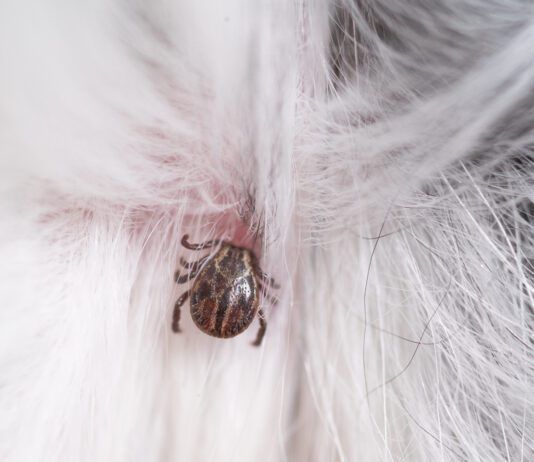Are Ticks Active in Winter?
It’s natural to wonder, are ticks active in winter? While ticks are typically less active once the temperatures begin to drop, there is still...
The Lyme Vaccine for Dogs
Dogs who show signs of an acute Lyme infection may experience fever, shifting leg lameness, swollen joints, enlarged lymph nodes, lethargy, depression, and loss of appetite.
Tick Paralysis In Dogs
Tick paralysis starts five to nine days after the tick attaches and feeds. If the ticks transmitting the neurotoxin are not removed, your dog will eventually die due to respiratory failure.
What is Anaplasmosis in Dogs?
Anaplasmosis is a tick-borne bacterial disease in dogs. Signs of an anaplasmosis infection usually occur during the first couple of weeks after infection and are usually mild.
What do Ticks Look Like on Dogs?
Knowing how to identify tick bites, and properly treat them is an important part of caring for your dog and preventing tick transmitted diseases and other health issues.
How to Remove a Tick from a Dog
It’s a good idea to check your dog carefully for ticks after every outing. You may find loose ticks crawling through your dog’s coat....
How to Get the Tick Out
It’s creepy enough that there are billions of these tiny insects living in the woods and fields, just waiting to latch onto your dog...
Lyme Disease in Dogs
fatigue
5 Steps to Safely Pull A Tick Off Your Dog
It's hard to say which is worse: running your hand over your dog and brushing against an attached tick, or seeing a tick skitter across your dog's face. Either way, the unwelcome arachnid must go. What should you do?
Advice for Tick Removal
Is it my imagination, or is a plague of ticks currently in effect? Everywhere I go with my dogs these days, they come back crawling with ticks. I use Frontline on them, though I've used Advantix in the past as well as apple cider vinegar rinses and essential oil sprays and Skin-So-Soft wipedowns. For whatever reason, Frontline seems to work better than anything else on my dogs, in my area, though I hear contrary reports from other dog owners in other places. I'm seriously considering making a line of Tyvek canine coveralls, instead.
Essential Oil Tick Repellents: What Works and What Doesn’t
Far be it from us to tell you to put pesticides on your dog. But weve never heard of a single nontoxic preparation that was effective at keeping ticks off all dogs. For some dogs, only the potent pesticides seem to keep ticks away. There are, however, some nontoxic products both commercially produced and homemade formulas that work to repel ticks well enough to consider using them as part of a comprehensive Lyme disease prevention program.
Tick Paralysis: What to Do if Your Dog Seems Paralyzed
Tick paralysis is caused by a neurotoxin produced by egg-engorged female ticks, who transmit the toxin from their salivary glands to the dog during feeding. The production (and transmission) of the toxin is greatest when the tick has been attached to and feeding from the dog between five and seven days. Five species of North American ticks produce the neurotoxin: the blacklegged tick (a.k.a. the deer tick), American dog tick, Rocky Mountain wood tick, the Lone Star tick, and the Gulf Coast tick. Most North American cases occur between April and June, when the ticks are at their peak reproductive activity.


















